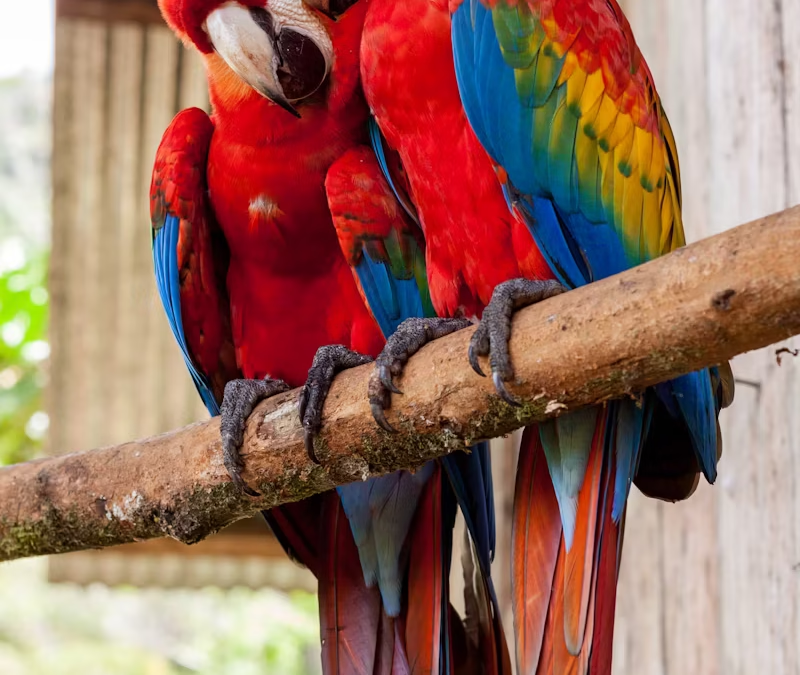Parrot First Aid
Parrot First Aid: Essential Tips Every Bird Owner Should Know
As a loving bird owner, keeping your parrot healthy and safe is always a top priority. But no matter how careful you are, accidents can happen. Whether it’s a minor injury, a sudden illness, or exposure to toxic substances, having a basic understanding of parrot first aid can make all the difference in an emergency situation.
Parrots are sensitive, intelligent, and emotionally complex birds. Parrots will hide signs of disease or pain, so owners must be responsive and confident when something is amiss. In this guide, we will cover the fundamentals of parrot first aid, such as response to injury, emergency equipment, signals of distress, and what you should do before you arrive at the vet.
Why Parrot First Aid Knowledge Is Important
Parrots have specialized behavior and anatomy that distinguishes their medical needs from that of cats and dogs. Birds can shock extremely quickly, unlike mammals, and typically won’t survive unless treated promptly. Having an understanding of the basics of bird first aid will stabilize your parrot and have an excellent chance of full recovery.
Regardless of whether you’re dealing with bleeding, breathing issues, a cracked blood feather, or heatstroke, having the right things—and the right equipment—can mean life or death for your bird.
Essential Supplies to Include in Your Parrot First Aid Kit
Every parrot owner can benefit from having a bird first aid kit on hand at home. Store the kit in an accessible place and check it frequently to ensure everything is clean and up to date.
Here’s what you’ll need to know about Parrot First Aid:
• Styptic powder or cornstarch (to stop bleeding)
• Saline solution (for rinsing wounds or eyes)
• Antiseptic spray or wipes (only bird-safe)
• Tweezers and small scissors
• Gauze pads and vet wrap (non-stick)
• Digital thermometer
• Heating pad or heat lamp (for shock or cold exposure)
• Towels (for gentle restraint of your parrot)
• Latex or nitrile gloves
• Your avian vet’s emergency contact information
Label the kit well and ensure everyone in the home is aware of its location.
Common Parrot Emergencies and How to Handle Them
Having a clue about what to do in an emergency can help save precious time. Following are some of the most common parrot health emergencies and simple first-aid measures to undertake before rushing to a vet:
1. Bleeding
Birds have small bodies and can lose dangerous amounts of blood quickly. Clog bleeding from a shattered feather shaft or toenail with styptic powder or cornstarch. Apply light pressure with a gauze pad.
2. Broken Blood Feather
This is a common issue in parrots. If a blood feather breaks and bleeds, apply pressure, and if bleeding persists, the feather may need to be pulled with clean tweezers (only if trained). Always follow up with your avian vet.
3. Shock
Symptoms include lethargy, eyes shut, feathers puffed up, and cold feet. Wrap the parrot in a towel, warm it with a low-heat heating pad, and stay calm. Movement and noise are to be avoided, and the bird is to be immediately taken to a veterinarian.
4. Choking or Trouble Breathing
Symptoms include tail bobbing, panting, or panic. Don’t try to remove an object yourself. Keep your bird calm and warm and rush to a bird vet.
5. Toxin Exposure
Common toxins include Teflon fumes, chocolate, avocado, alcohol, and certain houseplants. Remove your bird from the source, give clean water, and call a vet or poison control immediately.
6. Overheating or Heatstroke
Overheating may be indicated by panting, wings away from body, and lethargy. moved your parrot to a cooler location, spritz with water, and offer hydrations.
Early Indications of Disease or Trauma
Parrots hide indications of sickness in order to seem not weak (natural instinct to survive). It is important to watch for the smallest changes in behavior, appearance, or vocalization.
Be aware of:
• Fluffed feathers for extended periods
• Weight loss or loss of appetite
• Withdrawal changes (color, consistency, frequency)
• Absent or unusual aggression or drowsiness
• Balance or tremors
• Vocal change or silence
If you notice any of these signs, don’t delay. Early intervention will prevent serious complications.
When to Call the Vet
Although initial first aid will stabilize your bird, you’ll require professional veterinary care in almost all emergencies. Always have follow-up care by an avian-certified veterinarian, even if the issue seems trivial.
Keep your bird’s emergency contacts, veterinarian records, and transport carrier handy at all times. The quicker you respond, the better the chances of complete recovery.
Final Tips: Stay Calm and Prepared
In case of an emergency, your parrot will be reassured by your composed presence and prompt response. Habitual handling and training could make your bird remain in command in first-aid moments. Ensure your first-aid kit is in good condition, and participate in an exotic bird pet first aid course.
Being prepared and informed isn’t just good practice—its a key part of being a responsible bird owner.

